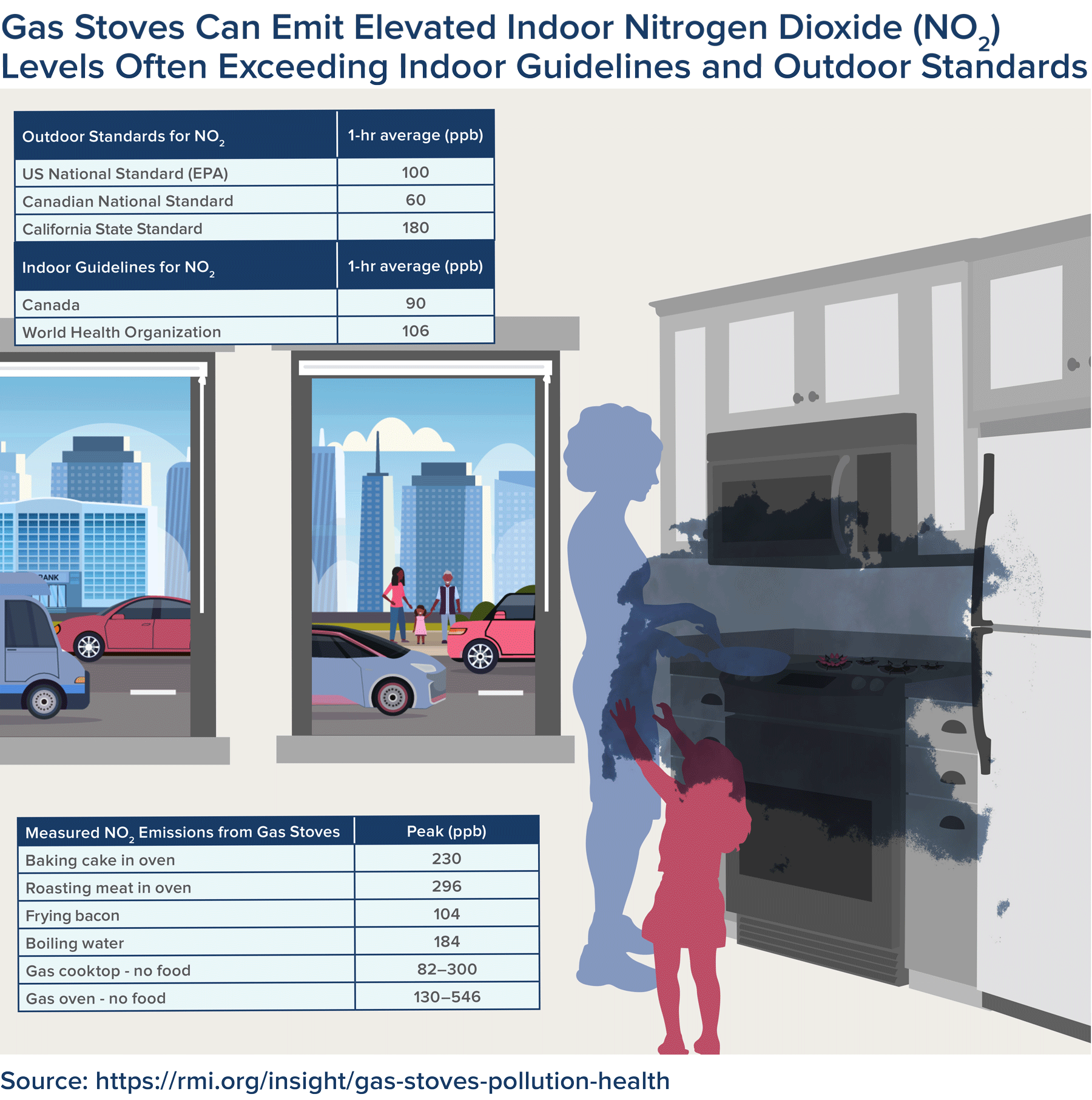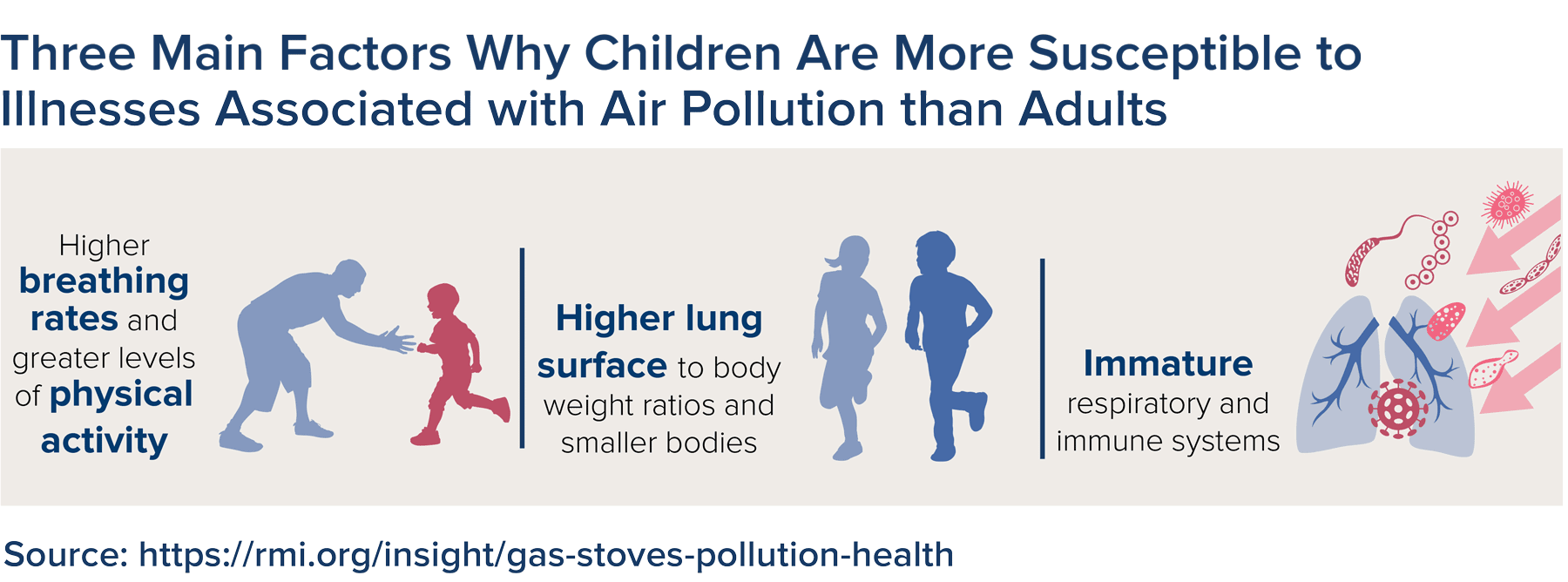
Report | 2020
Gas Stoves: Health and Air Quality Impacts and Solutions
Health Effects from Gas Stove Pollution
Rocky Mountain Institute, Physicians for Social Responsibility, Mothers Out Front, Sierra Club
Across the United States, millions of homes and apartments rely on gas appliances for heating and cooking. Burning gas in buildings is not only a threat to climate action but also to human health, as these appliances are sources of indoor air pollution. Gas stoves, particularly when unvented, can be a primary source of indoor air pollution. What’s more, a robust body of scientific research shows the pollutants released by gas stoves can have negative health effects, often exacerbating respiratory conditions like asthma.
Despite this growing body of evidence, indoor air pollution remains largely unregulated. In this report, we synthesize the last two decades of research and offer recommendations for policymakers, researchers, health care professionals, and the public to work to swiftly to mitigate the health risks associated with gas stoves. Air pollution is preventable, and we hope this report can spur the necessary action to protect public health.
Indoor Air Pollution: The Link between Climate and Health by Brady Seals
Click the “Download” button above for a PDF of the full report. The infographics below are also available for download.



